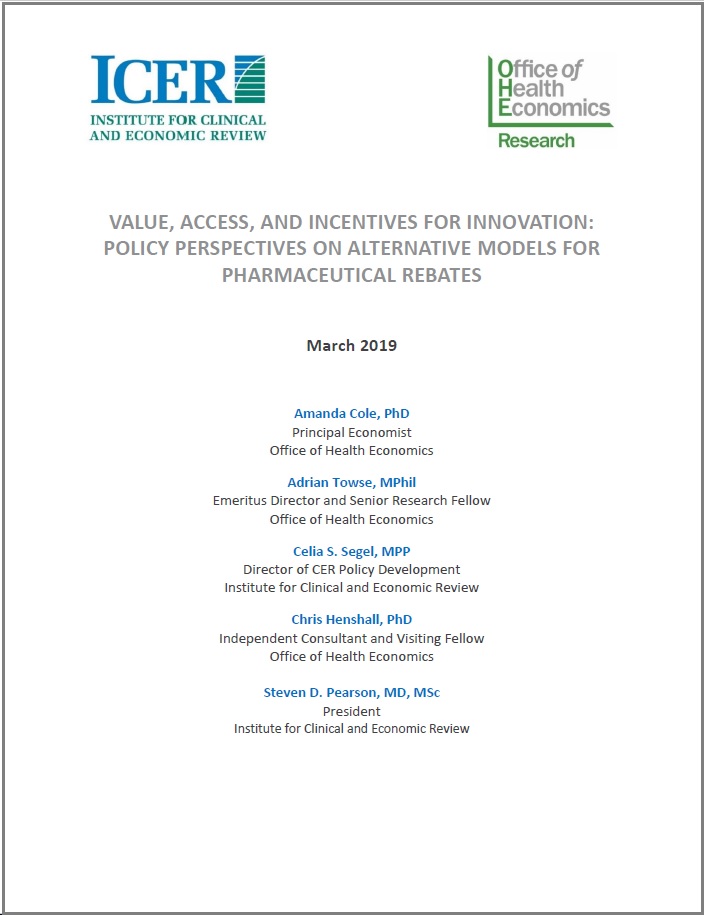Sign up to our newsletter Subscribe
Challenges and Solutions for Budget Impact Analysis of Gene Therapies

OHE Research Paper 19/02: The combination of rising drug costs in the US and increasing financial stress for individual patients has triggered intense national concern. One target has come under particular scrutiny: rebates. This paper describes how alternatives to the current US rebate system offer potential risks or disadvantages as well as potential benefits. It outlines the evidence presented to date, and the key questions that still need to be answered.
OHE Research Paper 19/02: The combination of rising drug costs in the US and increasing financial stress for individual patients has triggered intense national concern. One target has come under particular scrutiny: rebates. This paper describes how alternatives to the current US rebate system offer potential risks or disadvantages as well as potential benefits. It outlines the evidence presented to date, and the key questions that still need to be answered.
Rebates are a key negotiating tool for payers and help produce a lower “net” price for drugs that can help reduce the overall costs of drug spending. But for many years the PBM business model has included a revenue stream gained by retaining a percent of the absolute rebate amount they return to plan sponsors. The effect of rebates in lowering net prices may reduce plan sponsor costs and therefore help moderate the cost of insurance premiums for all plan members. However, some plan sponsors have suggested that the profitability of the rebate model provides an incentive for PBMs to prioritize high-rebate drugs that might not have the lowest net cost for the plan sponsor. All would agree that higher list prices hurt many patients who need ongoing drug treatment, since the increase in the use of co-insurance and of high-deductible plans has meant that rising numbers of patients are required to pay their out-of-pocket share for drug coverage in relation to the list price, not the negotiated rebate price.
There are three major alternative options to the current rebate model. The first two options represent rebate “reform” and may be implemented separately or, as many have argued, combined, but it is important for policy makers to consider the potential advantages and disadvantages of each element separately. The third option would involve eliminating rebates and moving exclusively to a system of upfront discounts.
Taking stock of the options for alternative rebate models, each with its own potential advantages and disadvantages, most stakeholders in the health care system realize that some form of change to the current paradigm of rebates is both needed and inevitable. But the way forward is fraught with risk and uncertainty, with deep trade-offs between short-term feasibility and long-term goals evident at every step.
In preparing the paper the authors undertook a focused literature review and evaluated the written responses to the HHS Blueprint on drug pricing from key stakeholders, including all participants in the ICER membership program. Ten interviews were conducted covering PBMs, public and private payers, manufacturers, academics, benefit consultants, and trade associations. An earlier version of this White Paper was sent out as a pre-read for the ICER members Policy Summit. This version of the paper takes account of the discussion at that meeting.
Please cite this report as:
Cole, A., Towse, A., Segel C.S., Henshall, C., Pearson, S.D. Value, Access, and Incentives for Innovation: Policy Perspectives on Alternative Models for Pharmaceutical Rebates. Institute for Clinical and Economic Review and the Office of Health Economics.
Available here.
Value, Access, and Incentives for Innovation: Policy Perspectives on Alternative Models for Pharmaceutical Rebates
